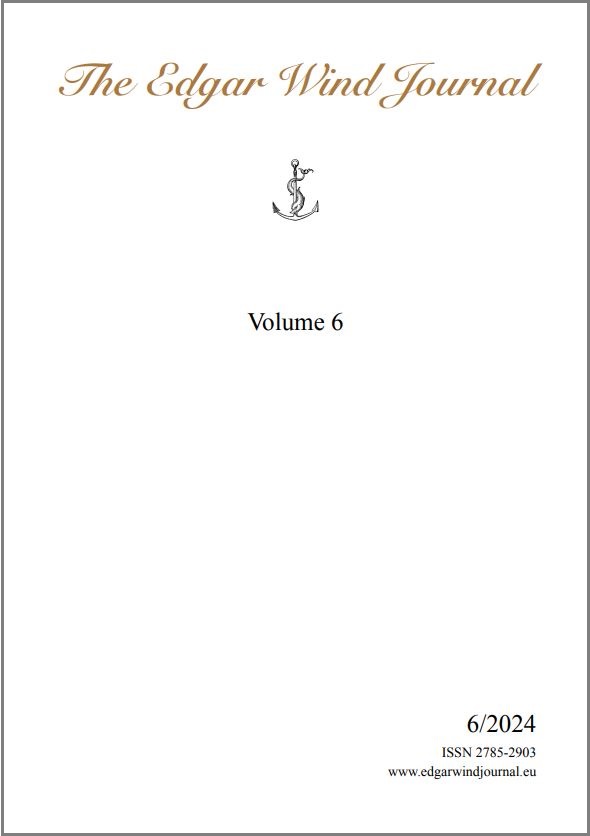Angelo Lo Conte
Academy of Visual Arts, Hong Kong Baptist University
https://orcid.org/0000-0002-2146-6948
Volume 6, April 2024
Abstract
The study examines a series of paintings recently surfaced on the European art market expanding the catalogue of Carlo Antonio Procaccini, one of the most accomplished Italian landscape painters of the first three decades of the seventeenth century. A key member of the most successful workshop in Milan, Carlo Antonio was one of the first Italian artists to develop a repertoire of landscape and still-life paintings exploring genres usually monopolised by Flemish and Dutch painters. Carlo Antonio integrated models typical of Jan Brueghel and Paul Bril’s landscapes with compositional elements developed within the Procaccini workshop, establishing a signature style easily recognisable for north Italian collectors. Arising from the analysis of unpublished works of art, this essay outlines the marketing strategies adopted by Carlo Antonio Procaccini in Milan and emphasizes how the deliberated reproduction of compositional models represented an essential practice within the Procaccini family workshop.
Keywords
Art History, Baroque Art, Art Market, Landscape Painting, Carlo Antonio Procaccini
Bibliography
Andreini, Giovanni Battista, L’Adamo: Sacra Rappresentazione (Milan: Geronimo Bordoni, 1613).
Dell’Omo, Marina and Martinella, Stefano, ‘La Fortuna dei Procaccini sulla Sponda Piemontese del Lago Maggiore’, Verbanus 43 (2023), 1-17.
Dotti, Davide, ‘Carlantonio Procaccini Pittore di Nature Morte’, Paragone, 62 (2011), 35-41.
Firmati, Marco, Passioni di un Collezionista. Dipinti Fiamminghi e Olandesi del Cinque e Seicento, exh. cat. (Grosseto: Edizioni Effigi, 2023).
Jones, Pamela, ‘Federico Borromeo as a Patron of Landscapes and Still-lifes: Christian Optimism in Italy ca. 1600’, The Art Bulletin, 70 (1988), 261-272.
Jones, Pamela, Federico Borromeo and the Ambrosiana: Art Patronage and Reform in Seventeenth Century Milan (Cambridge: Cambridge University Press, 1993).
L’Occaso, Stefano, ‘Unpublished drawings by Camillo Procaccini and Giuseppe Ghezzi in Mantua’, Master Drawings 49 (2011), 175-178.
Lo Conte, Angelo, ‘Federico Borromeo e l’Invenzione della Ghirlanda di Fiori: Evoluzione Lombarda di un Genere Pittorico’, Italian Studies 71 (2016), 67-81.
Lo Conte, Angelo, ‘Carlo Antonio and the “bottega” Procaccini’, Zeitschrift für Kunstgeschichte, 83 (2020), 7-31.
Lo Conte, Angelo, The Procaccini and the Business of Painting in Early Modern Milan (New York and London: Routledge, 2021).
Malvasia, Carlo Cesare, Felsina Pittrice (Bologna: Per l’erede di Domenico Barbieri, 1678).
Manzitti, Camillo, Bernardo Strozzi (Turin: Allemandi, 2012).
Meijer, Bert, Parma e Bruxelles. Committenza e Collezionismo Farnesiani alle due Corti (Milan: Silvana, 1988).
Morandotti, Alessandro, ‘Da Procaccini a Strozzi. L’Alternativa a Caravaggio lungo l’Asse Milano-Genova’, in L’Ultimo Caravaggio Eredi e Nuovi Maestri, Napoli, Genova e Milano a Confronto 1610–1640, ed. by Alessandro Morandotti (Milan: Skira, 2017), pp. 13-19.
Orlandi, Pellegrino, Abecedario Pittorico del M.R.P. Pellegrino Antonio Orlandi Bolognese: Contenente Notizie de’ Professori di Pittura, Scoltura, ed Architettura, in questa Edizione Corretto e Notabilmente di Nuove Notizie Accresciuto (Naples: Niccolò Parrino, 1763).
Sénéchal, Philippe, ‘La Pratique de la Copie chez les Graveurs: a Propos du Repos de la Sainte Famille de Jacques Callot’, Gazette des Beaux-Arts, 1501 (1994), 73-86.
Soprani, Raffaele and Ratti, Carlo Giuseppe, Le Vite dei Pittori, Scultori e Architetti Genovesi di Raffaello Soprani. In questa Seconda Edizione Rivedute e Accresciute di Note da Carlo Giuseppe Ratti (Genoa: Stamperia Casamara, 1768).
Sterling, Charles, La Nature Morte de l’Antiquitè à nos Jours (Paris: Edition Musées Nationaux, 1952).
Tagliaferro, Giorgio, ‘Introduction: the Composition of Themes and Variations by Titian and his Workshop’, in Titian. Themes and Variations, ed. by Peter Humfrey (Florence: Mandragora, 2022), pp. 12-37.
Terzaghi, Maria Cristina, ‘Per il Caravaggismo a Genova e in Liguria: Arrivi e Partenze tra Roma e Napoli’, in I Caravaggeschi. Percorsi e Protagonisti, ed. by Alessandro Zuccari (Milan: Skira, 2010), pp. 109-126.
Tonelli, Giovanna, ‘The Economy in the 16th and 17th Centuries’, in A Companion to Late Medieval and Early Modern Milan, ed. by Andrea Gamberini (Leiden: Brill, 2014), pp. 142-165.
The Edgar Wind Journal 6: 103-127, 2024
DOI: 10.53245/EWJ-000032
Copyright: © 2024 A. Lo Conte. This is an open access, peer-reviewed article published by Bernardino Branca
